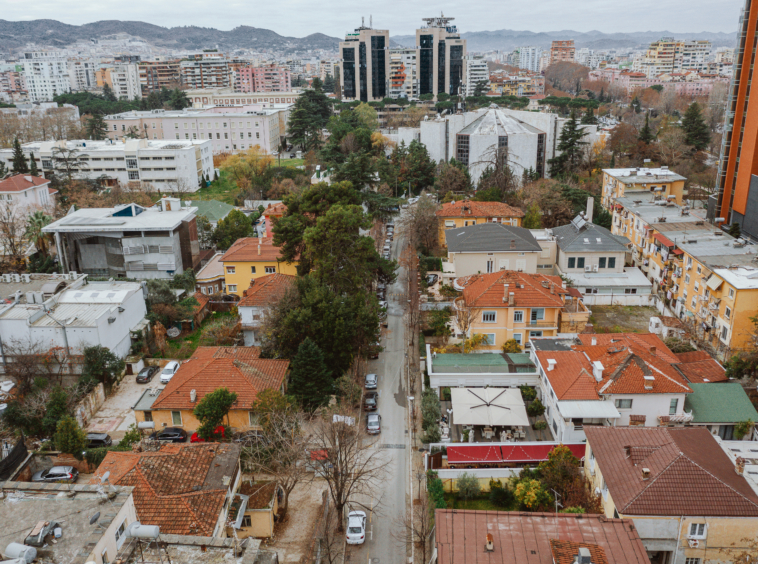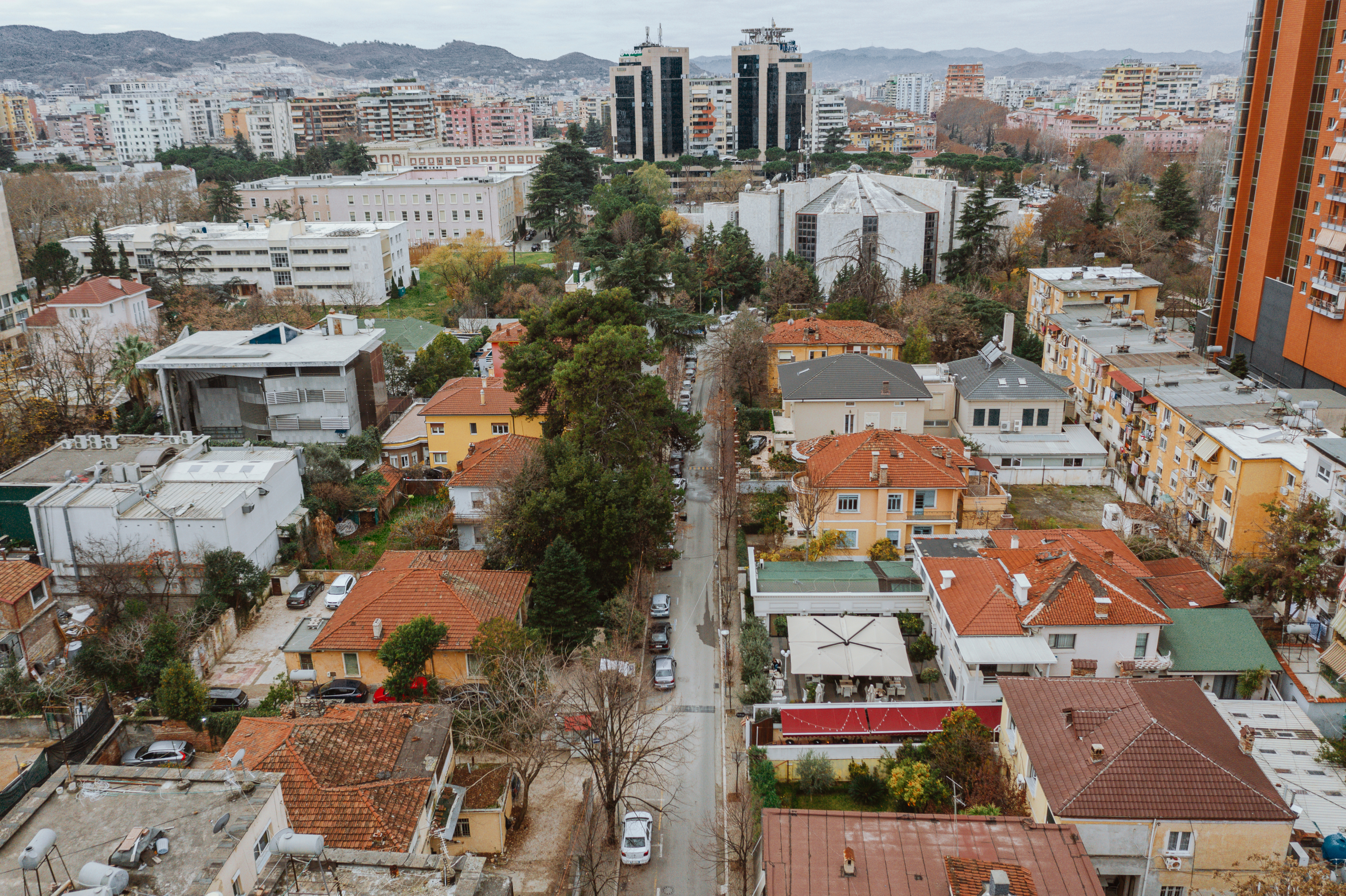Villas on “Jul Variboba” Street
Details
Updated on December 30, 2024 at 12:40 pmInformation
- Author: Various local and foreign architects
- Year Built: 1920s–1930s
Description
Jul Variboba Street, located behind the Pyramid and intersecting with Pope John Paul II Boulevard, preserves elements of Tirana’s early 20th-century urban character. This street reflects the city’s aspirations during the 1920s and 1930s to develop as a garden city, emphasizing harmonious urban planning and integrating nature into residential spaces.
Architectural and Urban Characteristics
The villas along Jul Variboba Street, built during the interwar period, exhibit a blend of Art Deco and Modernist styles. Designed by both local and foreign architects, these residences served as homes for the city’s bourgeois class, a social stratum that was experiencing significant growth during that era.
- Detached Villas with Green Plots:
Each villa is set within a spacious plot, with gardens at both the front and back.- Private Gardens: The front gardens are adorned with ornamental plants, creating a welcoming and serene environment.
- Back Gardens: These typically feature fruit trees and grassy areas, emphasizing the integration of nature into everyday life.
- Fencing and Railings:
The entire property is enclosed by fences, offering privacy and security. Along the street, elegant railings of various designs enhance the aesthetic appeal, adding an element of individuality to each villa.
Architectural Styles
The predominant architectural styles of the villas include:
- Art Deco: Characterized by geometric patterns, decorative details, and streamlined forms, reflecting the cosmopolitan influences of the era.
- Modernist: Focused on functionality and simplicity, with clean lines and minimal ornamentation.
Historical Context
The development of Jul Variboba Street was part of a broader effort to transform Tirana into a modern European capital. The villas, designed for the city’s affluent class, embodied the ideals of progress, elegance, and comfort. The neighborhood’s layout, with ample green spaces and detached homes, aligned with the garden city movement, which sought to create healthier and more livable urban environments.
Contemporary Changes
Over time, many of the original villas have been demolished and replaced by tall buildings, reflecting the pressures of urbanization and increasing property values in central Tirana. However, some of the remaining villas have been repurposed, often transformed into stylish bars and restaurants, allowing them to retain a functional role in the city’s contemporary life.
Cultural and Urban Significance
Jul Variboba Street stands as a reminder of Tirana’s architectural and social evolution during the early 20th century. The remaining villas not only reflect the craftsmanship and design sensibilities of their time but also serve as a connection to the city’s historical identity as a garden city.
Legacy
While much of the street has changed, the surviving villas and their associated green spaces continue to offer glimpses into a bygone era of Tirana’s urban development. Efforts to preserve and repurpose these buildings provide a way to balance modernization with respect for the city’s architectural heritage.
Address
Open on Google Maps- City Tirana








